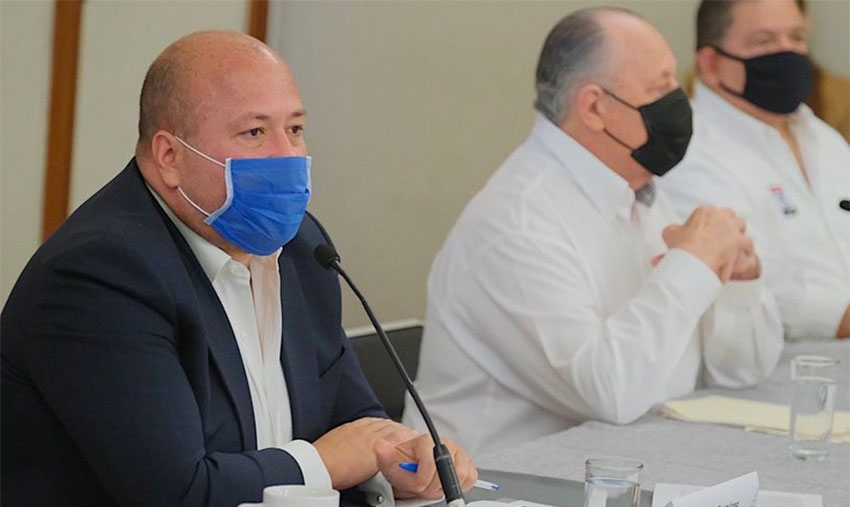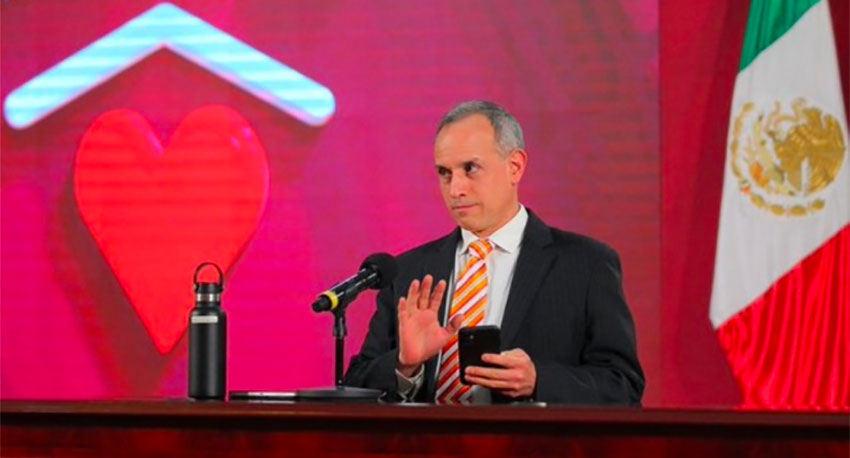The federal government’s plan to reopen the economy gradually on a state by state basis starting June 1 — even as the coronavirus pandemic worsens — has divided governors, with some supporting the move and others saying it is too soon.
The state leaders have largely split along party lines, the newspaper El Economista reported, noting that all 10 National Action Party (PAN) governors are in favor of a gradual reopening starting on Monday.
In contrast, most of the 12 Institutional Revolutionary Party (PRI) governors and six Morena party leaders are planning to wait longer to reopen the economies in their states, which include those with the largest active outbreaks of Covid-19: Mexico City, México state, Veracruz, Tabasco, Baja California and Puebla.
Morelos’ Social Encounter Party governor, Cuauhtémoc Blanco, also believes that a gradual reopening on June 1 is too soon but Citizens Movement Governor Enrique Alfaro of Jalisco, Democratic Revolution Party Governor Silvano Aureoles of Michoacán and independent Governor Jaime Rodríguez of Nuevo León share the same view as the PAN leaders.

After a virtual meeting with the governors on Tuesday, Interior Minister Olga Sánchez stressed that it will be the federal government – not state authorities – that decides when economic and everyday activities can resume in each federal entity.
The federal government’s stoplight system will guide the reopening process for each state, she said.
“We cannot have … local stoplight systems because there would be a complete lack of coordination. We have to have federal coordination,” Sánchez said, emphasizing that there will be constant dialogue with the governors so that everyone’s on the same page.
Her remarks came after Guanajuato’s PAN governor, Diego Sinhué, presented his own stoplight system to guide the reactivation of the economy in that state. Governor Alfaro of Jalisco also said that his state will follow its own reopening plan, although he added that his administration will take the federal government’s view into account.
“What I think is curious is that they’re talking about coordination from the [federal] government when there wasn’t any for 2 1/2 months. … We’re on our [own] path, we have our own stoplight system. … We’ll take the federal one into account … but we’ll continue with the route we’ve planned,” he said.
Alfaro said that all the indicators in Jalisco – where there are currently 400 active coronavirus cases, according to official statistics – are “on green” but stressed that the economic reopening will be gradual and that residents will not be free to roam the streets as they please from Monday on.
Alfaro and Sinhué along with the PAN governors of Aguascalientes, Baja California Sur, Chihuahua, Durango, Nayarit, Querétaro, Quintana Roo, Tamaulipas and Yucatán as well as Colima’s PRI Governor José Ignacio Peralta all support a gradual reopening of the economy starting Monday.
Sánchez acknowledged that some governors are “chomping at the bit” to reopen their economies and want to do so according to their own timetable but reiterated that that the federal government’s position is non-negotiable. “The stoplight system is federal,” she declared.
Deputy Health Minister Hugo López-Gatell, the federal government’s coronavirus point man, also made it clear that states will not be permitted to ease restrictions as they see fit.
“We’ve made it very clear, … there is one national stoplight system, one sole instrument,” he told reporters at Tuesday night’s coronavirus press briefing.
“Every federal entity will obviously have a different color according to their [local] epidemic. … The risk rating given to each state will be variable in each state each week,” López-Gatell said.
He explained that the federal government will inform state governments of the color they will be allocated for the following week on Tuesdays after which there will be an opportunity for dialogue between the parties.
The stoplight color allocated to each state will be publicly announced on Fridays and the restrictions that apply to each color will take effect the following Monday, López-Gatell said.

He said that the states will have the option of implementing stricter coronavirus mitigation measures than those stipulated by the stoplight color they are allocated but cannot relax measures before the federal government gives them the authority to do so.
The federal government has not yet publicly announced what factors will be taken into consideration to determine whether a state is allocated a red, orange, yellow or green light but Yucatán Governor Mauricio Vila said Tuesday night that the criteria had been explained in private to the state leaders.
He said in an interview that four factors will be taken into account to determine each state’s readiness to return to what has been dubbed “the new normal”: the number of beds available for patients with serious respiratory symptoms, hospital admission trends for Covid-19 patients, the coronavirus reproduction rate (the number of people each infected person infects) and the positivity rate (the percentage of people tested who are confirmed to have Covid-19).
In “red” states, only essential economic activities will be permitted including the newly-designated sectors of construction, mining and automotive. Other sectors will be permitted to resume operations once the stoplight switches to orange but with a reduced capacity and/or workforce and with restrictions in place to prevent the spread of Covid-19. Public spaces will also be reopened but at a reduced capacity.
Businesses will be able to increase their workforces and capacity once their state has been allocated a yellow light and there will be fewer restrictions in open-air public spaces. However, stricter restrictions will remain in force in indoor spaces such as restaurants, cinemas and theaters.
Once a state is given a green light, students will return to school and other educational institutions and all remaining restrictions on economic and everyday activities will be lifted.
There are currently almost 15,000 active Covid-19 cases in Mexico, the highest level since it was first detected in Mexico at the end of February.
The federal Health Ministry reported a record 3,455 new confirmed cases on Tuesday, increasing the total number of accumulated cases to 74,560, and a new daily high of 510 fatalities, lifting the death toll to 8,134.
Source: El Universal (sp), Milenio (sp), El Economista (sp)
